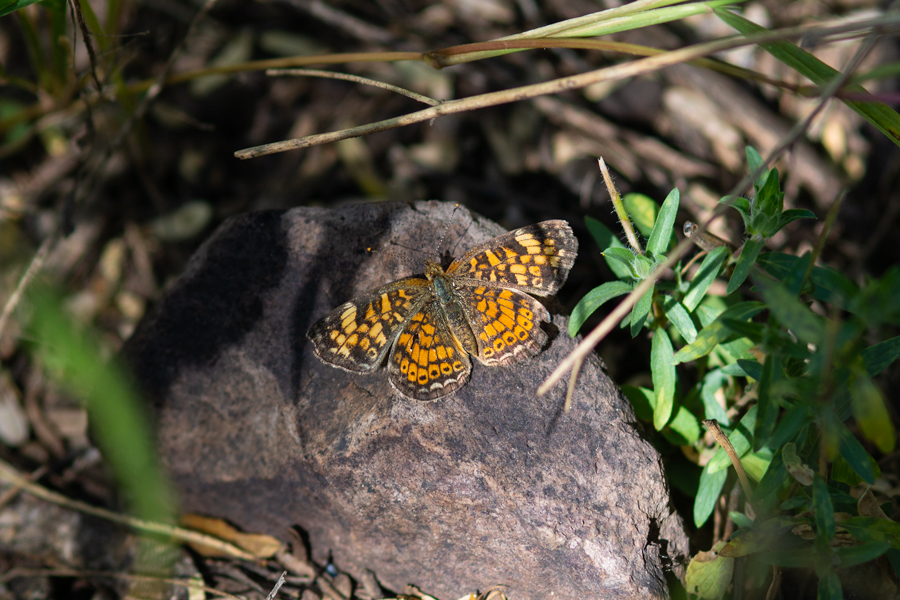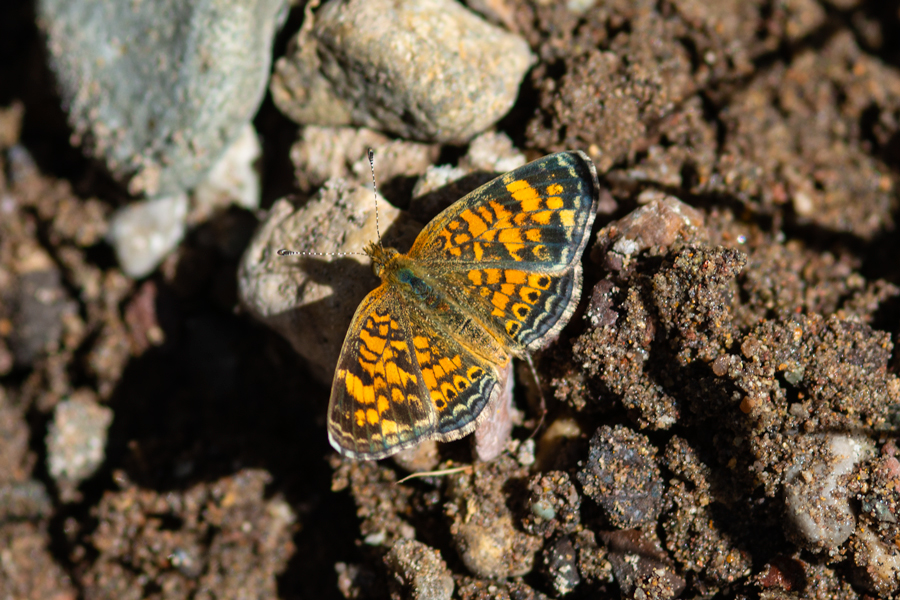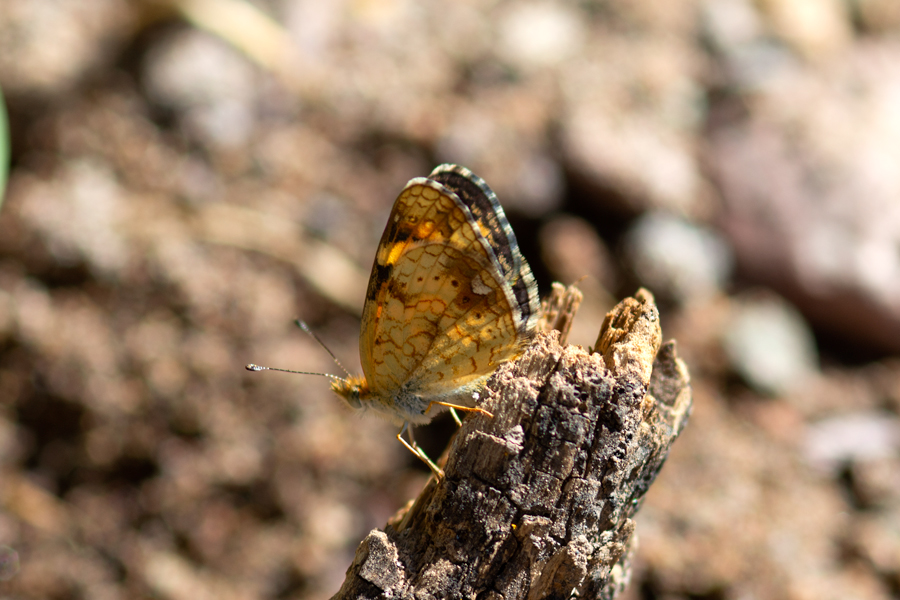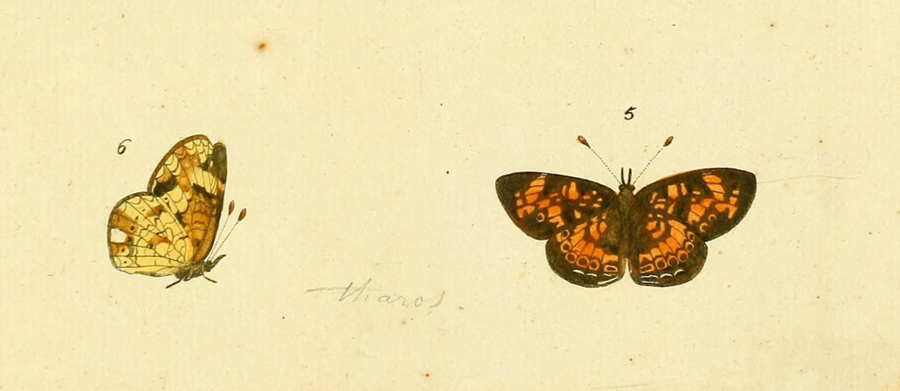Phyciodes tharos tharos
Pearl Crescent
Phyciodes tharos tharos was a resident of Imperial County but is now probably extirpated from California. The entry in Garth and Tilden's 1986 book California Butterflies is interesting; they knew this butterfly as the "Distinct Crescent", Phyciodes pascoensis distinctus. The entry for this crescent in the Emmels' 1973 book Butterflies of Southern California is worth quoting in part: "In the 1930s, Gunder noted this species as occurring in the Imperial Valley and being phenotypically different from typical tharos. [Chris] Henne has taken them (9 October 1935) from a resident population near the Del Rio Club in Brawley, Imperial County. Other collectors have picked up specimens in vegetation along irrigation ditches in the Brawley area of the Imperial Valley during the late summer and fall months. Before the introduction of irrigation in this arid desert country, it is doubtful that P. tharos could have resided in the natural habitats of the area" (p.39). That is the background for Ken Davenport's entry in his update to that book, where he says "Kilian Roever (pers. comm.) believes modern agricultural practices related to land preparation, irrigation and use of more potent pesticides contributed to this butterfly's extirpation" (p. 150).



